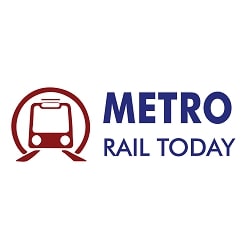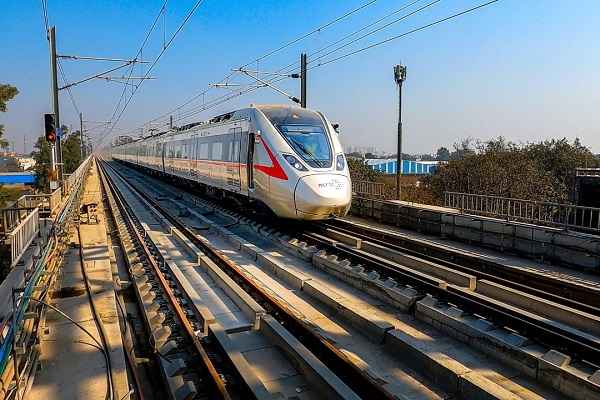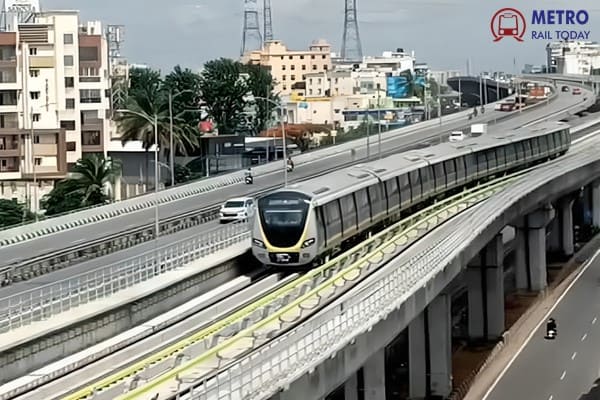 Hitachi Rail GTS India Wins ₹76 Crore AFC Contract for Bangalore Metro Phase 2A & 2B
Hitachi Rail GTS India Wins ₹76 Crore AFC Contract for Bangalore Metro Phase 2A & 2B L&T Technology Services Bags ₹70 Crore AFC Contract for Mumbai Metro Line 7A & 9
L&T Technology Services Bags ₹70 Crore AFC Contract for Mumbai Metro Line 7A & 9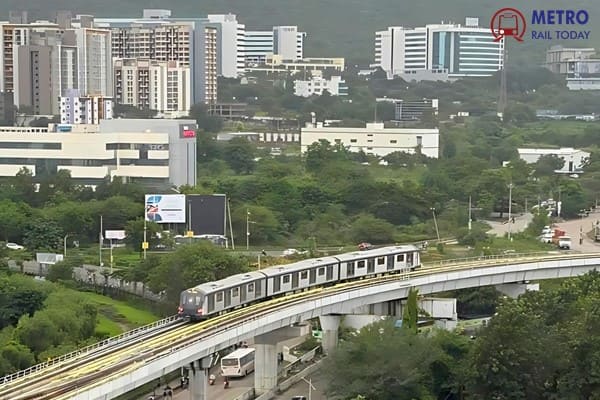 Larsen & Toubro Bags ₹4,788 Crore System Contract for Mumbai Metro Line 4 & 4A
Larsen & Toubro Bags ₹4,788 Crore System Contract for Mumbai Metro Line 4 & 4A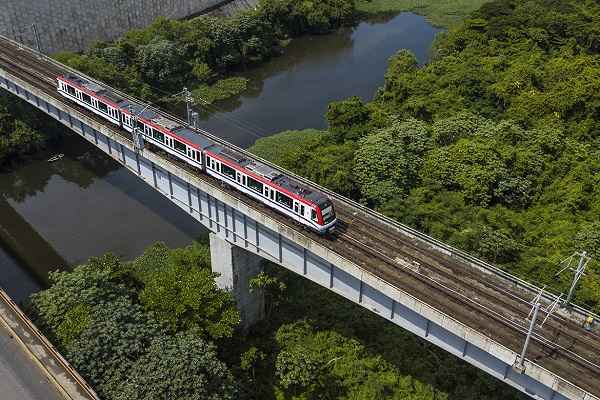 Poland unveils 29-km new metro rail plan for Krakow with 10-years deadline
Poland unveils 29-km new metro rail plan for Krakow with 10-years deadline BEML seeks Expression of Interests from Global Leaders for Indigenous TBM Manufacturing in India
BEML seeks Expression of Interests from Global Leaders for Indigenous TBM Manufacturing in India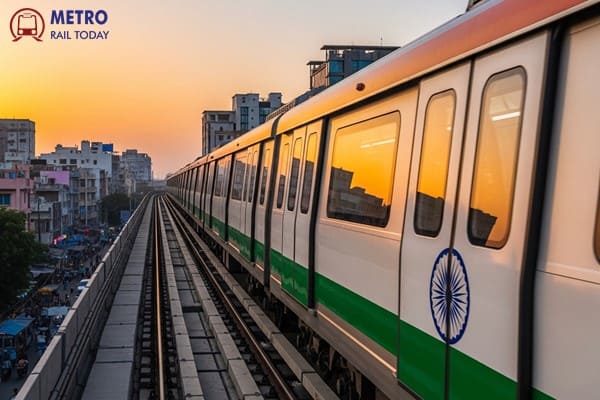 Lucknow Orbital Rail Corridor set to redefine Northern India's connectivity and Logistics Landscape
Lucknow Orbital Rail Corridor set to redefine Northern India's connectivity and Logistics Landscape Evelyn Palla appointed CEO of Deutsche Bahn AG, Becomes First Woman to lead the company
Evelyn Palla appointed CEO of Deutsche Bahn AG, Becomes First Woman to lead the company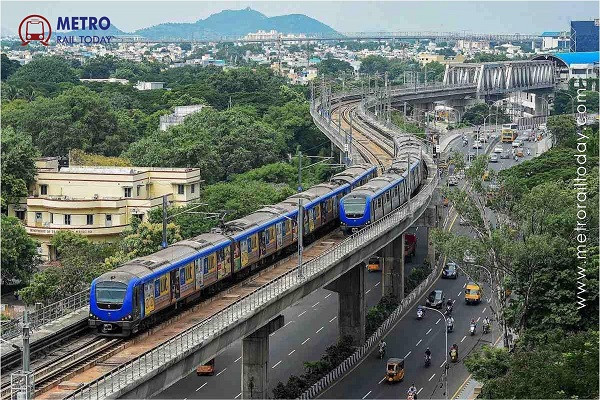 TN Govt and Indian Railways set to sign Chennai MRTS-Metro Integration MoU by December 2025
TN Govt and Indian Railways set to sign Chennai MRTS-Metro Integration MoU by December 2025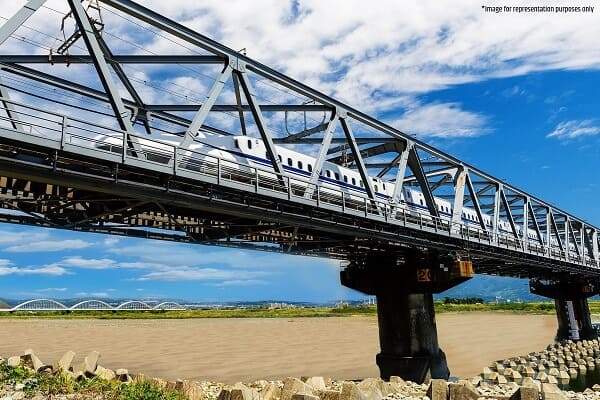 Saudi Arabia launches EOI for Qiddiya High-Speed Rail Project to link KSIA, KAFD and Qiddiya City
Saudi Arabia launches EOI for Qiddiya High-Speed Rail Project to link KSIA, KAFD and Qiddiya City HCC bags ₹2,566 Crore Civil Contracts for Patna Metro's Underground Corridor
HCC bags ₹2,566 Crore Civil Contracts for Patna Metro's Underground Corridor
Parliamentary panel calls for RRTS expansion to decongest Indian Cities

New Delhi, India (Metro Rail Today): In its Fifth Report (2024–25) on regional transit tabled this month, the Lok Sabha Standing Committee on Housing and Urban Affairs chaired by MP Magunta S. Reddy flagged that booming city populations are straining infrastructure and worsening congestion and pollution. The panel urged the government to introduce modern Regional Rapid Transit Systems (RRTS) around major urban centres to decongest cities and curb pollution. It noted that at present the only RRTS under construction is in the National Capital Region – linking Delhi with Meerut – with two other priority corridors planned from Delhi to Alwar (via SNB–Shahjahanpur–Neemrana–Behror) and Delhi to Panipat. According to the committee, Delhi’s rapid population growth has created housing, transport and pollution challenges, highlighting the need for regional planning and an RRTS network in the NCR.
The committee stressed that RRTS networks should not be confined to the NCR. It explicitly recommended developing similar rapid rail corridors for India’s other mega‐cities – Mumbai, Kolkata, Chennai, Hyderabad and Bengaluru – which face “insufficient infrastructure, congestion and pollution”. Such systems would allow commuters to live in outlying suburbs while staying connected to city‐center jobs, education, health and entertainment hubs, boosting overall productivity and quality of life. In other words, “modern transportation solutions like RRTS” can enable suburban living and seamless access to urban opportunities. The report also noted that RRTS is most effective in cities with strong existing metro or mass-transit networks, which can integrate the new corridors into the wider transit grid.
Planning, funding and state coordination
Recognizing that urban transport planning is primarily a state subject, the panel called for close coordination between central and state governments. It urged the Ministry of Housing and Urban Affairs (MoHUA) to push states to prepare detailed regional and functional transport plans for their cities. “Subject to preparation of such detailed plan by the concerned State Government,” MoHUA should then consider RRTS project proposals based on state commitment, financial feasibility and other factors, and lay out a clear implementation roadmap. The committee emphasized that the Centre cannot simply be a source of funding – it must take a proactive policy role in regional planning. In practice, this means the central government driving policy decisions for metropolitan regions, while states develop the actionable transport blueprints for RRTS and other projects.
Status of NCR RRTS corridors
Within the NCR, three RRTS corridors were prioritized (Phase I). These are:
-
Delhi–Meerut: Construction of The 82.15 km priority corridor (from Delhi to Meerut) has been completed. It is estimated to cost ₹30,274 crore. Out of 82.15 km, 55 km section is currently operational. The corridor’s trains (operated by a Deutsche Bahn subsidiary) will ultimately cut the Delhi–Meerut travel time to under 60 minutes at speeds up to 160–180 km/h.
-
Delhi–Gurugram–SNB–Alwar: This line (often called the Delhi–Alwar RRTS) would link Delhi with Alwar via Gurugram, Shahjahanpur, Neemrana and Behror. As of mid-2025 it has not been sanctioned; its detailed project report is undergoing revision.
-
Delhi–Panipat: This corridor requires Central Delhi to Panipat. Its DPR has been prepared but is still awaiting approval and financial commitment by the Delhi government.
The committee noted that although DPRs for all three corridors have been finalized, only the Delhi–Meerut project has taken off, while the other two remain stalled. The panel warned that such delays “undermine” the purpose of these transformative projects.
Central role and extending NCRTC’s mandate
Finally, the panel observed that the National Capital Region Transport Corporation (NCRTC) – the state-owned body executing RRTS – has developed unique expertise from the Delhi projects (including the Meerut RRTS and Meerut Metro integration). Currently, NCRTC’s legal mandate is limited to the NCR. The committee recommended leveraging this capacity nationwide: it advised that through appropriate legislation, NCRTC’s remit be extended beyond the NCR to design and build integrated multi-modal suburban rail networks in other regions. In effect, NCRTC could become a national agency for regional transit solutions, helping new RRTS or similar systems expand to India’s other large cities.




